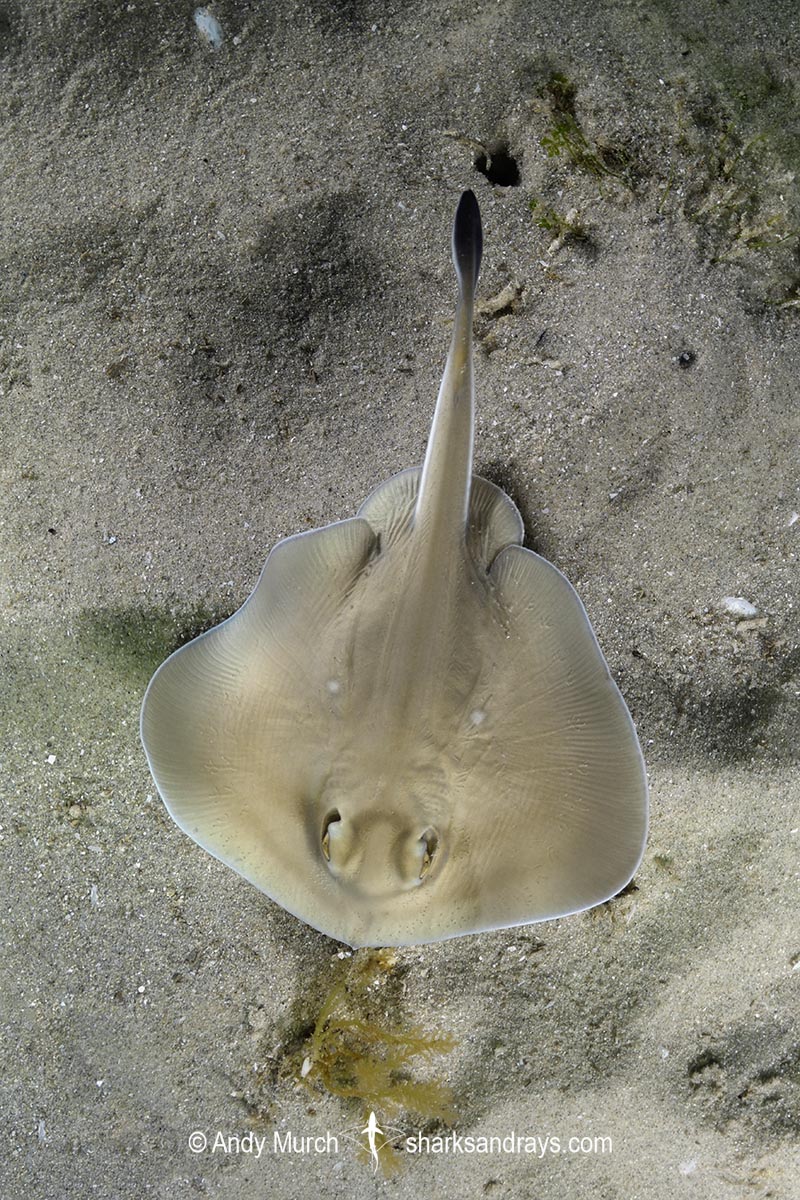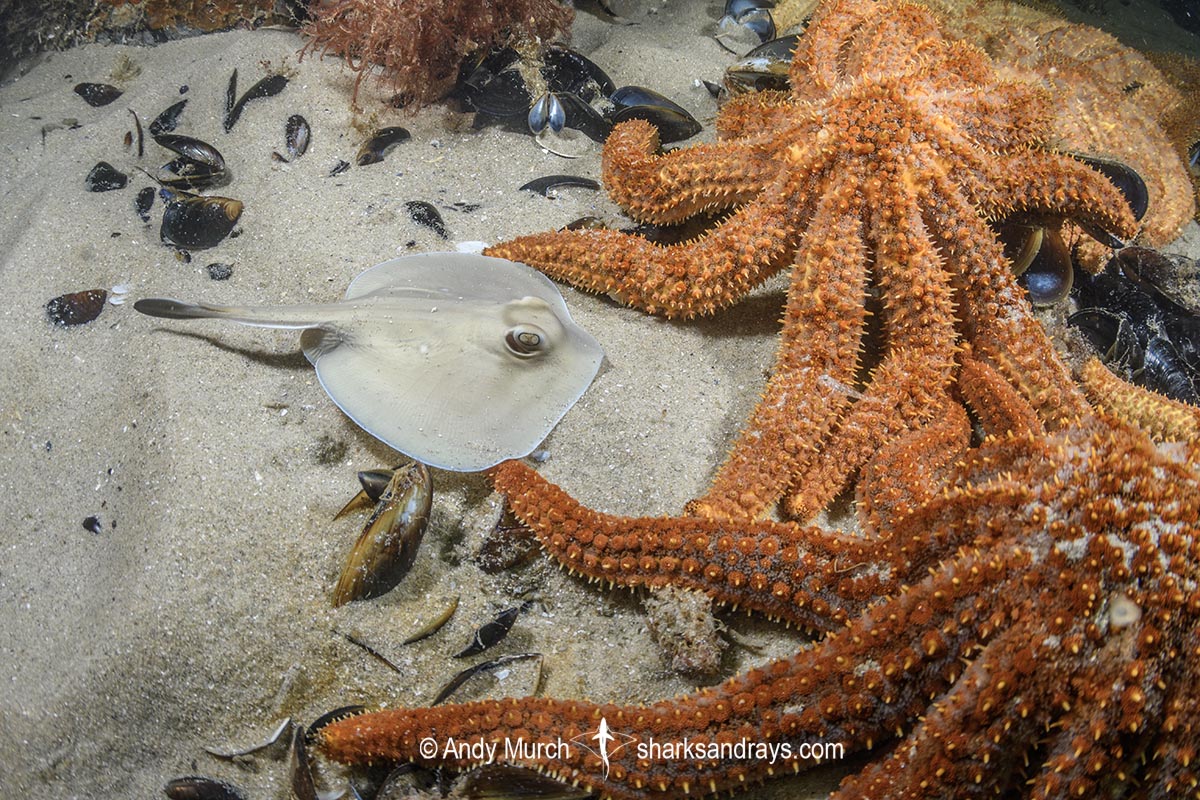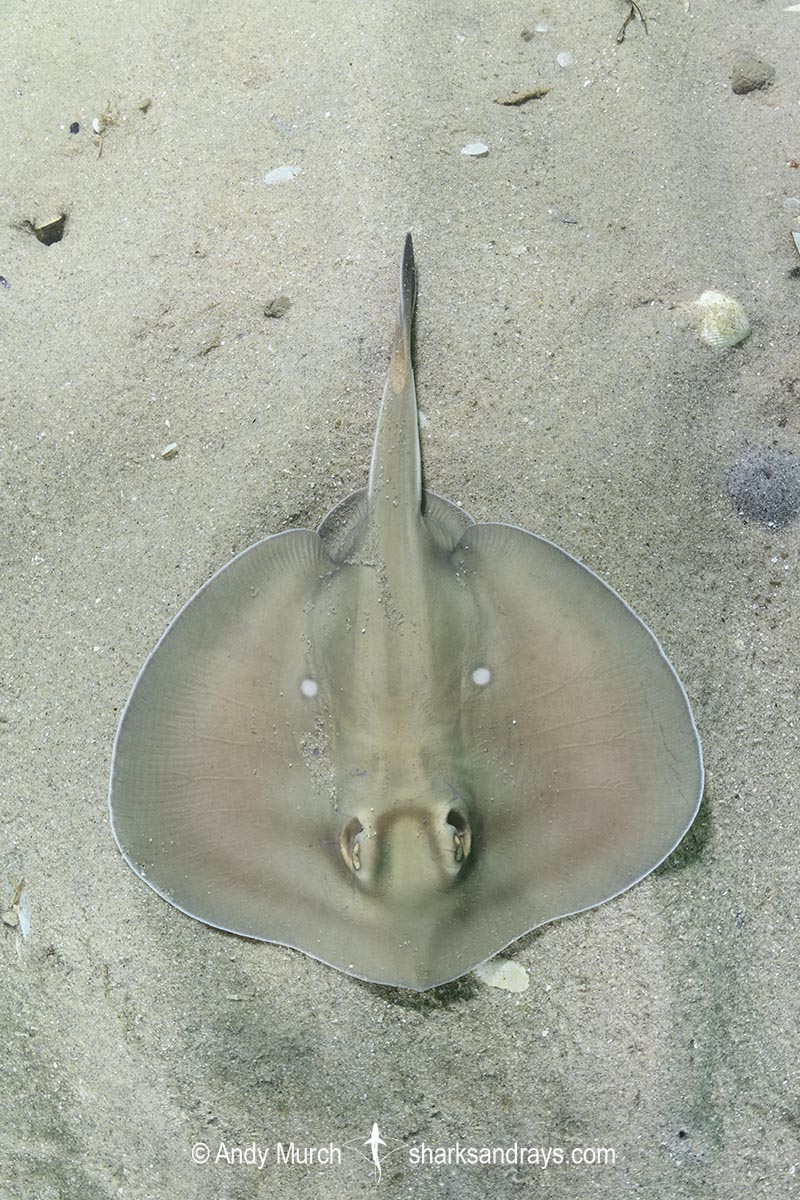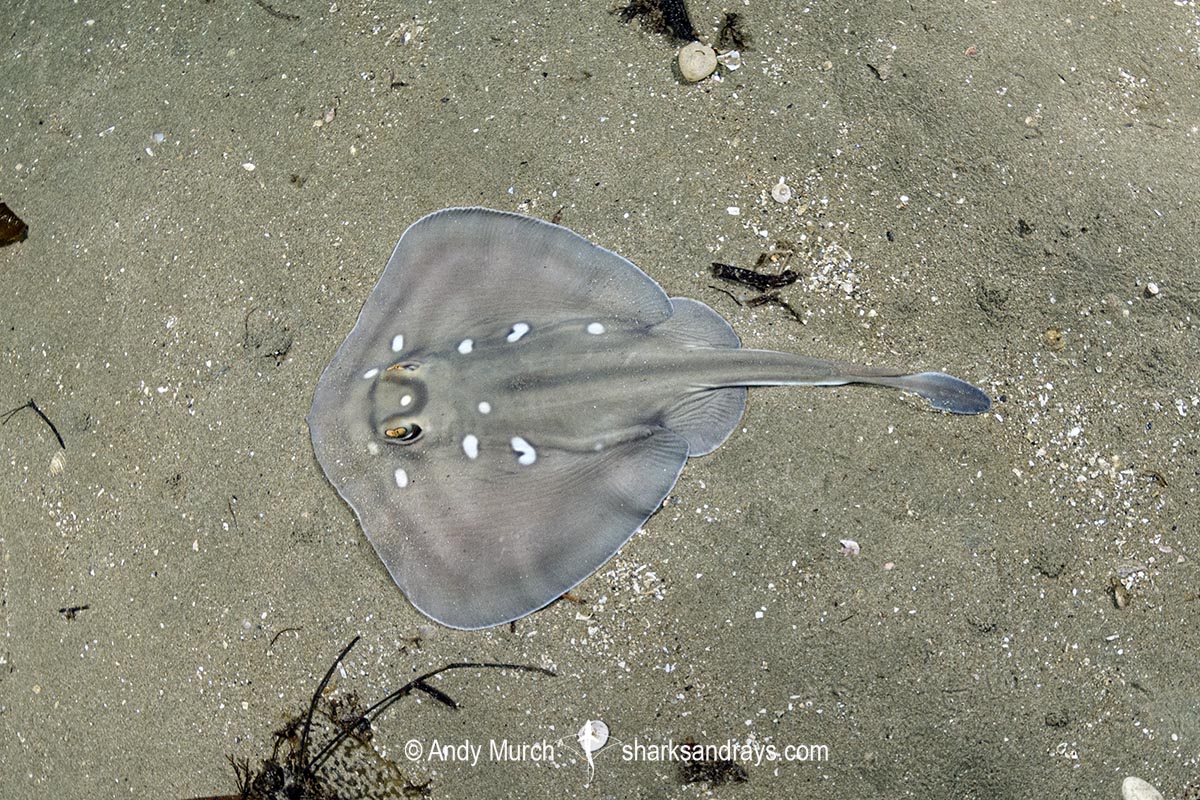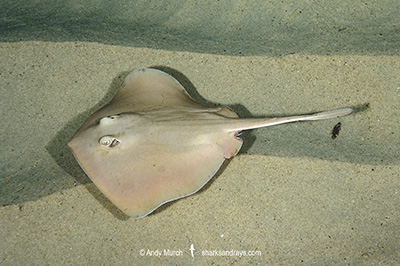Common names
Sparsely-spotted Stingaree.
Binomial
Urolophus paucimaculatus.
Synonyms
Trygonoptera paucimaculatus.
Identification
A medium-sized stingaree with a rounded kite-shaped disc that is wider than long. Snout obtusely angular with a small protruding lobe on tip. Anterior margins of disc straight, apices broadly rounded. Disc completely smooth.
Eyes small; orbit length 0.22-0.28 x snout length. Spiracle origin anterior to mid-eye. Mouth small. 5-6 oral papillae on mouth floor. Nasal curtain bell-shaped, rarely extended, posterior margin weakly fringed. No fleshy lobe on each nostril.
Tail relatively long, length approximately 0.77-0.98 x disc length. Tail heavily depressed at base with prominent lateral skin folds. Dorsal fin absent. Caudal fin long and deep, with a narrowly rounded tip.
Colour
Dorsum uniformly light grey, greenish grey, or yellowish grey, usually with one or more irregular white spots arranged symmetrically on pectoral fins. Sometimes with 1-2 dusky lines running parallel to anterior margin of disc, between eyes, and along centre line. Caudal fin dark edged, black in juveniles. Ventrum white with dusky margins laterally.
Populations on the western edge of the sparsely-spotted stingaree’s range are usually deeper and unspotted, whereas populations in the south are usually shallower and have white spots.
Size
Total length 57cm. Length at birth 15cm.

Conservation Status
LEAST CONCERN
The Sparsely-spotted Stingaree is a reasonably abundant stingaree, with a wide range in southern Australia.
It is caught in a number of different ground fisheries and declines have been noted in shark and scalefish fisheries, but this is thought to reflect changes in fishing pressure, rather than overall abundance.
Between 1970-91, the sparsely-spotted stingaree population actually increased in Port Phillip Bay, possibly due to a decline in competitors.

Habitat
The sparsely-spotted stingaree is found in subtropical and temperate seas. Usually on sandy substrates, often adjacent to rocky reefs from 10-206m. Mostly below 100m at the western edge of its range.
Distribution
Southern Australia. From Lancelin WA to Crowdy Head, NSW, including all of Tasmania.
Reproduction
Viviparous with an annual reproductive cycle. Gestation ~11 months. Litter size 1-6 in the southern part of its range. 1-2 in the southwest.
Diet
Crustaceans and polychaete worms.
Behavior
Remains concealed under sand for most of the day.
Reaction to divers
Skittish. Generally moves away when being approached closely but sometimes tolerant if approached carefully.
Diving logistics
The sparsely-spotted stingaree is an abundant species in shallow water in parts of Victoria and Tasmania.
In December while shore-diving Rye Pier in Port Phillip Bay, I encountered 20+ animals on each dive. Most were juveniles.
In Tasmania, I found around a dozen in Bicheno Bay on a single shore dive, the same amount in Blackman’s Bay in the Derwent River estuary, and a few on dives around the Tasman Peninsula.
What’s new
View our full list of updates
Similar species
Common Stingaree Distinguished by lack of white spots and presence of small dorsal fin on tail.
Eastern Shovelnose Stingaree Distinguished by lack of white spots and presence of dark or yellowish flecks.
Western Shovelnose Stingaree Distinguished by lack of white spots and occasional presence of dark or yellowish flecks.


